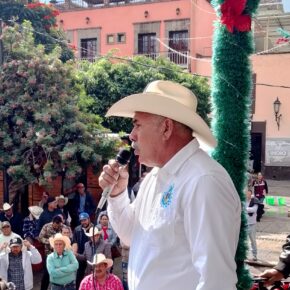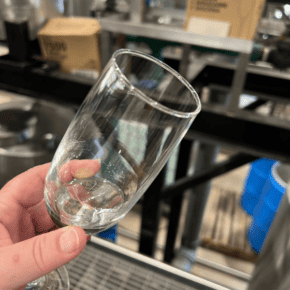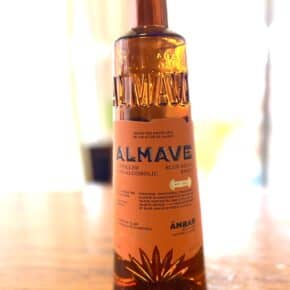Or how I learned to appreciate tequila again
It feels like two lifetimes ago when I was a regular tequila drinker. Once I moved beyond the college years, where tequila consumption was usually in the form of shots of Cuervo, I landed on Cazadores and El Tesoro as my regular go tos. This was in the early 90s and lasted into the early 2000s, and then mezcal found me and I pretty much stopped drinking tequila.
Tequila came back into my life in the form of Khrys Maxwell. Our mutual love of agave was the basis of our friendship and we would nerd out on extended conversation on the phone. It grew from there, fully coalescing after the death of his beloved wife. I knew something about profound grief, having lost my sister and then father in the span of just a couple of years. Culturally speaking, we are not very good in the US in dealing with death, and so people who have experienced loss have a tendency to find one another; we can talk about death and loss and grief in a way that makes anyone who is not familiar with the emotions incredibly uncomfortable.
Khrys worked for Tequila Fortaleza at the time so I gave tequila another go around. But aside from the Fortalezas, El Tesoros and Don Fulanos that I occasionally sipped, I found I didn’t really like most of the others, and with so much mezcal to try, I didn’t really care to investigate further.
The rise of fracked agave
In 2018, Mexico in a Bottle partnered with the Denver Taco Festival. They were looking to change up their Tequila Expo component of the event and we were looking to expand, Denver seemed like a good target market. The event put us on the radar of many tequila brands which were looking for other kinds of agave events to participate in. I would check in with Khrys about the various brands that reached out to me, since I really knew nothing about the tequila industry, but I was not spared from having to sip on a bunch of different tequila samples and being very unimpressed. I just could not understand how the tequila market could be booming when so much of what was out there just did not taste good, and certainly didn’t taste like the tequila I had consumed in the past.
It was always hard for me to describe why I didn’t like the majority of tequila that came my way and I usually found myself saying things like, it tastes manufactured, I can’t taste the agave, why does everything have vanilla in it. I thought it was perhaps the process of steaming the agave in stainless steel that rid it of flavor, but that couldn’t account for it given that was not a new process in the making of tequila. It was in a conversation with Khrys where he was talking about the increase in “diffuser jive” and I had no idea what that meant and thus the diffuser process was explained to me.
In short, the diffuser is a massive piece of industrial equipment that uses hot water (and possibly chemicals like sulfuric acid) and mechanical shredders to extract the carbohydrates from raw agave, sugar cane, wood, or fruit to produce a distillate. They are predominantly used to produce tequila at large volumes. For an in depth definition of the process, check out our Mezcal Encyclopedia entry.
The only way I could wrap my head around the process was to equate it to the process of fracking oil and natural gas and thus the phrase “fracked agave” was born.
So many things are done in the name of efficiency and usually don’t result in things of quality. In the case of diffusers, it is thought they can extract up to 99% of agave sugars, as compared to 70% in a traditional production. That sounds great in theory but what it has led to is the ability to extract agave sugars from unripe agave, meaning three or four year old agaves are now used in the production. No wonder you can’t taste an agave flavor in the majority of tequilas on the market because the majority of tequilas are made using a diffuser. This has put huge pressure on the cultivation of agave but it has also kept tequila prices lower than they would be if fully mature agaves were being used.
Why aren’t we talking about this?
Initially there were a few distilleries using diffusers and then more and more began once the benefits became clear – efficient, high volume production, which enabled distillers to feed the beast of growing demand brought on by the Casamigos effect. I remember this being a major topic of conversation among the tequila people I know before the pandemic hit. They were concerned, and rightly so, of the impact this would have on the whole category. But the problem with diffusers never really took off in media coverage outside of small group. People were so enamored of the booming category, and media acted more like cheerleaders, giddy over the year over year growth, the number of new brands in the market and the amount of money being made.
And producers began finding ways to compensate for the lackluster flavors that resulted from diffuser made tequilas by way of additives. To be clear, there is nothing wrong with additives – we see them in mezcals all the time with abocado con o destilado con (pechugas) and more. We have the added advantage in mezcal, by regulation, of having to declare what any additives are on the label. That is not the case with tequila and it has led to the additive free movement driven by Tequila Matchmaker. Misty Kalkofen has a terrific piece in Liquor.com that traces the beginnings of this movement and why it is significant. The fact that the use of additives seems to have exponentially grown at the same time as the explosion of the use of diffusers leaves little doubt that these two things are related. But unlike with what happened with the disappearance of conversation over the use of diffusers, the conversation over the use of additives has resonated in a major way, potentially leading to changes in regulations around their use and labeling. Baby steps perhaps to eventually addressing the elephant in the room – how diffusers are ruining tequila. There, I said it.
So how did I come to like tequila again?
I had this ah-ha moment in 2021 while participating in an online vertical tasting with Tequila Ocho led by Jesse Estes. As we tasted through various years I was struck by two seemingly contradictory thoughts, wow, these are some beautifully made agave spirits and whoa, I think maybe I don’t care for tequilana weber. It was the second thought that really hit me. As mezcal drinkers, we are so lucky to be exposed to the incredible variety of agaves used in the making of mezcal. This gives us an endless source of agave flavors to taste from and enables us to pick and choose favorites, though to be honest, my list of top five agaves is always changing, especially as I have spent more time traveling to so many different mezcal producing regions. And that’s the biggest difference between tequila and mezcal, in mezcal, we are not beholden to just one kind of agave, even if the espadin is the predominant agave used in the production of mezcal. A brief side note here – just because agaves might be part of the same species, tequilana is a subspecies of agave Angustifolia, does not mean they share the same flavor characteristics.
That ah-ha moment of realizing that perhaps I didn’t care for the flavor of the tequilana weber was a huge moment for me, and one possible only because I have had the privilege to try so many other types of agaves and their distillates, and it changed my whole approach to drinking tequila. Now that I understood it was the agave itself that was not pleasing in flavor to me, it allowed me to concentrate on how different tequilas were made to understand the flavor profiles.
In June of this year, I visited Jalisco, and specifically, tequila country for the first time and had the opportunity to visit both Cascahuin and Tequila Ocho and sip tequila straight off the still. At both places I had in depth tours followed by long conversations about the state of tequila over several tequilas ranging from blancos to extra añejos. Anytime you are able to sip an agave distillate where it is made with the person who makes it, it creates an indelible connection that your brain never forgets. And I found myself really enjoying tequila.
About a month and a half later, at Tales of the Cocktail, I had what I called my “tequila day”. I went to the Agave Geeks Unite seminar which focused on the state of tequila and included a long conversation on additives and diffusers. I then went to a party where I had the chance to sip on some new expressions of Fortaleza that were using some new to them production methods that were very much traditional processes as well as a sneak peak of the 2023 Winter Blend. And I fully appreciated all of them. The same thing followed with a dinner hosted by Mijenta Tequila. Understanding why I stopped liking tequila made me appreciate tequila again.
While tequilana weber may never be in my personal top five agave varieties, learning more about how each aspect of the process from harvest, to fermentation, and distillation style, allowed me to appreciate not only the diverse flavors but the rich history and evolution of this beloved agave spirit.
Perhaps the biggest takeaways for me from diving back into tequila and focusing on production process was a greater understanding of how those processes are directly related to the flavors I enjoy with agave spirits – that cooking in an underground or masonry oven infuses the agave with deeper, more complex flavors and that fermenting with the cooked and crushed agave fibers ultimately gives the spirit a more nuanced and layered flavor. But that could just be my own stubbornness as a mezcal drinker.
The elephant in the room
The tequilas I have been enjoying are part of a small corner of the tequila world. These are crafted tequilas made in a more traditional process than the majority of tequilas in the market. The dominance of diffuser made tequila has fueled the increasing use of additives to mask the poor flavors. Consumers have been convinced that efficient productions are better, and are better suited for volume production. The problem with this argument is that it encourages a volume production that is wreaking environmental havoc and at the end of the day, creating a subpar spirit. This is the conversation we need to be having.
Mezcal production is a drop in the bucket compared to tequila production. But despite every red flag serving as a warning for the progression of mezcal production, mezcal still follows in tequila’s footsteps. The category takes comfort in the categories NOM-70 created, and the vast majority of mezcal entering the market does so as an ‘artesanal mezcal’ which prohibits the use of diffusers in production. It also prohibits mixtos and the use of cane distillates, and yet there are so many stories of cane distillates being sold to producers across regions to meet volume demand.
Hopefully, as mezcal producers continue to grapple with the increasing pressures of greater production, they will take a page from tequila producers who have found ways to balance quality and volume production. They are out there and man oh man do I appreciate them.













Had my first taste of good tequila straight off the still at Fortaleza. Within a year we couldn’t stand tequila – there seemed to be a back taste that was off-putting. We found it was easier to drink unlicensed raicilla (yeah- the funky stuff).
We had an aha moment while tasting Tequilanas from Zacatecas. All made artisanal style. When we were at Erick’s last fall, we picked up a killer tequilana. Erick thinks a lot of it has to do with the horrific monocropping in the valley.